No more elephant and monkey acts. No more death-defying motorbike stunts. No more singing or acting on stage.
Several hundred spectators still clapped constantly when acrobats with Dongchoon Circus Troupe, South Korea’s last and 100-year-old circus, twirled on a long suspended fabric, juggled clubs on a large, rotating wheel and rode a unicycle on a tightrope under the big top.
“As I recall the hardship that I’ve gone through, I think I’ve done something significant,” Park Sae-hwan, the head of the circus, said in a recent interview. “But I also feel heavy responsibility because if Dongchoon stops, our country’s circus, one genre in our performing arts, will disappear. That’s the problem.”
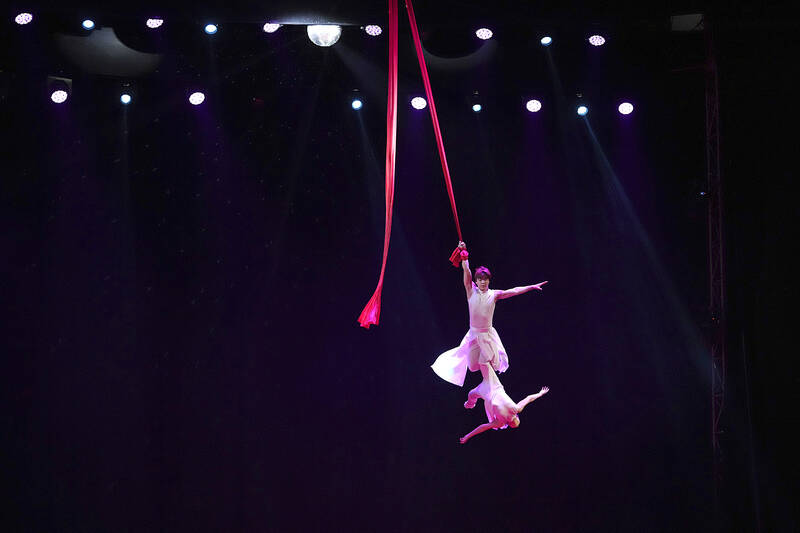
Photo: AP
THE GOLDEN AGE
Founded in 1925, Dongchoon is Korea’s oldest circus. In the golden ages of South Korean circuses in the 1960s when most households still had no TVs, Dongchoon travelled across the country, wowing audiences with then exotic animals like an elephant and a giraffe and a variety of shows including skits, comic talks, singing, dancing and magic shows. At its peak years, it had more than 200 artists, acrobats and other staff, according to Park.
Like in many other countries, TVs and movies later syphoned off the audiences of Dongchoon and other circuses in South Korea. Their actors, singers and comedians moved to TV stations, and some became bigger stars. The advent of the internet, video games and professional sports were another blow. South Korean circuses also dropped animal shows that faced protests by animal rights campaigners.
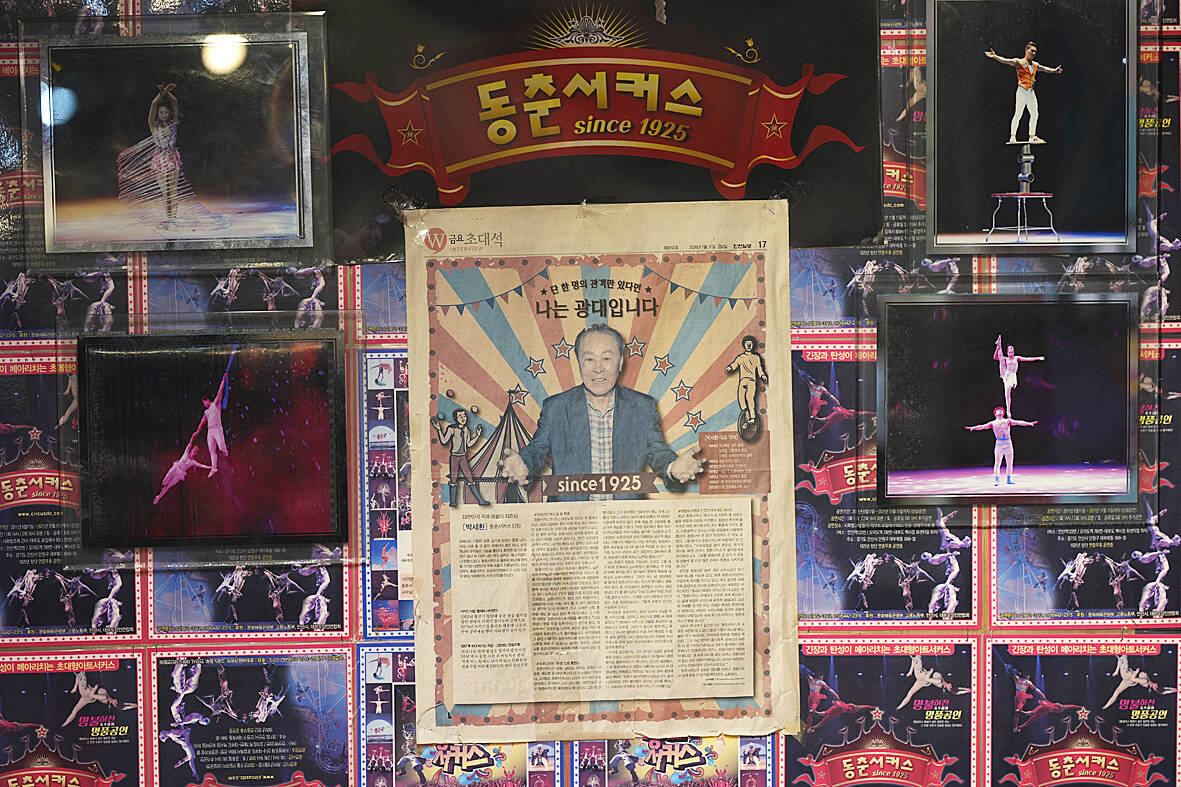
Photo: AP
Now, Dongchoon is the only circus in South Korea after all its rivals went out of business.
SURVIVAL
Park, who joined Dongchoon in 1963, served as a show host and sometimes sang and acted in the circus’ drama programs. He left the circus in 1973 and ran a lucrative supermarket business. In 1978, he returned to the circus industry by taking over Dongchoon, which was put up for sale after devastating typhoon damage.
Park, now 80, said he worried Dongchoon could disappear into history after seeing newspaper reports that its assets would be split into parts and sold.
“I thought Dongchoon must not disappear. When we want to study the roots of our country’s dramas, we should look back on the traces of Dongchoon. The same goes for the history of our other shows, traditional music performances and magic shows as well as circuses themselves,” Park said.
Heo Jeong Joo, an expert at the All That Heritage Research Institute, also values highly the legacy of Dongchoon, which she said incorporated many traditional performers and artists who operated before its 1925 founding.
“Its foundation exceeds 100 years. In a historical perspective, I think it should be designated as an intangible cultural asset,” Heo said.
Park said he almost closed the circus in 2009 after his shows drew only 10 to 20 spectators each for several months during a widespread flu outbreak. It survived after local media reports sympathizing with the plight of Dongchoon prompted many people to flock and fully pack shows for weeks, he said.
Since 2011, Dongchoon has been performing at a big top at a seaside tourist area in Ansan, just south of Seoul. Its circus workers also frequently travel to other areas for temporary shows. Dongchoon officials said their business is doing relatively well, drawing several hundred spectators on weekdays and up to 2,000 on weekends at Ansan alone.
Ansan official Sharon Ham said local tourism has been boosted by Dongchoon’s presence. She said Dongchoon shows are popular with both older generations wanting to recall childhood memories of circuses and younger generations seeking something new.
RISK-AVERSE
“It was a very impressive and meaningful circus,” Sim Chung-yong, a 61-year-old spectator, said after one show last week.
“But I also thought about how much big pains and hardships those circus acrobats underwent to perform like this.”
Dongchoon officials say they now offer only acrobatic performances and refrain from too-risky acts because many people don’t like them any longer.
All 35 acrobats are now Chinese, as a circus job is generally shunned by more affluent South Koreans who consider it too dangerous and low-paying. Park said he bought land at Ansan where he hopes to build a circus school to nurture South Korean circus artists.
Xing Jiangtao, 37, has been working for Dongchoon since 2002 — initially as an acrobat and now as its performance director. He recalled that when he first came to South Korea, he and his Chinese colleagues all worked as assistants to Dongchoon’s 50 South Korean acrobats but they’ve all left one by one.
“Now, it’s the only circus in South Korea, and I hope we will create good circus performances to show to spectators so that we can help Dongchoon exist for another 100 years,” Xing said in fluent Korean.
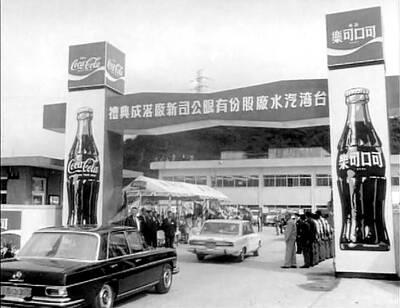
July 28 to Aug. 3 Former president Chiang Kai-shek (蔣介石) reportedly maintained a simple diet and preferred to drink warm water — but one indulgence he enjoyed was a banned drink: Coca-Cola. Although a Coca-Cola plant was built in Taiwan in 1957, It was only allowed to sell to the US military and other American agencies. However, Chiang’s aides recall procuring the soft drink at US military exchange stores, and there’s also records of the Presidential Office ordering in bulk from Hong Kong. By the 1960s, it wasn’t difficult for those with means or connections to obtain Coca-Cola from the

Fifty-five years ago, a .25-caliber Beretta fired in the revolving door of New York’s Plaza Hotel set Taiwan on an unexpected path to democracy. As Chinese military incursions intensify today, a new documentary, When the Spring Rain Falls (春雨424), revisits that 1970 assassination attempt on then-vice premier Chiang Ching-kuo (蔣經國). Director Sylvia Feng (馮賢賢) raises the question Taiwan faces under existential threat: “How do we safeguard our fragile democracy and precious freedom?” ASSASSINATION After its retreat to Taiwan in 1949, the Chinese Nationalist Party (KMT) regime under Chiang Kai-shek (蔣介石) imposed a ruthless military rule, crushing democratic aspirations and kidnapping dissidents from
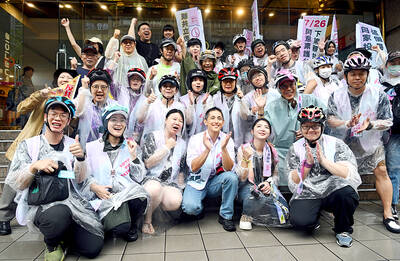
Taiwan is today going to participate in a world-first experiment in democracy. Twenty-four Chinese Nationalist Party (KMT) lawmakers will face a recall vote, with the results determining if they keep their jobs. Some recalls look safe for the incumbents, other lawmakers appear heading for a fall and many could go either way. Predictions on the outcome vary widely, which is unsurprising — this is the first time worldwide a mass recall has ever been attempted at the national level. Even meteorologists are unclear what will happen. As this paper reported, the interactions between tropical storms Francisco and Com-May could lead to
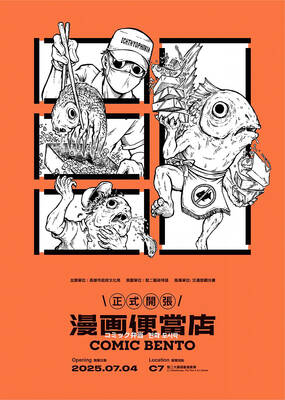
It looks like a restaurant — but it’s food for the mind. Kaohsiung’s Pier-2 Art Center is currently hosting Comic Bento (漫畫便當店), an immersive and quirky exhibition that spotlights Taiwanese comic and animation artists. The entire show is designed like a playful bento shop, where books, plushies and installations are laid out like food offerings — with a much deeper cultural bite. Visitors first enter what looks like a self-service restaurant. Comics, toys and merchandise are displayed buffet-style in trays typically used for lunch servings. Posters on the walls present each comic as a nutritional label for the stories and an ingredient